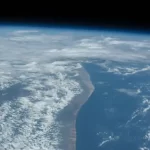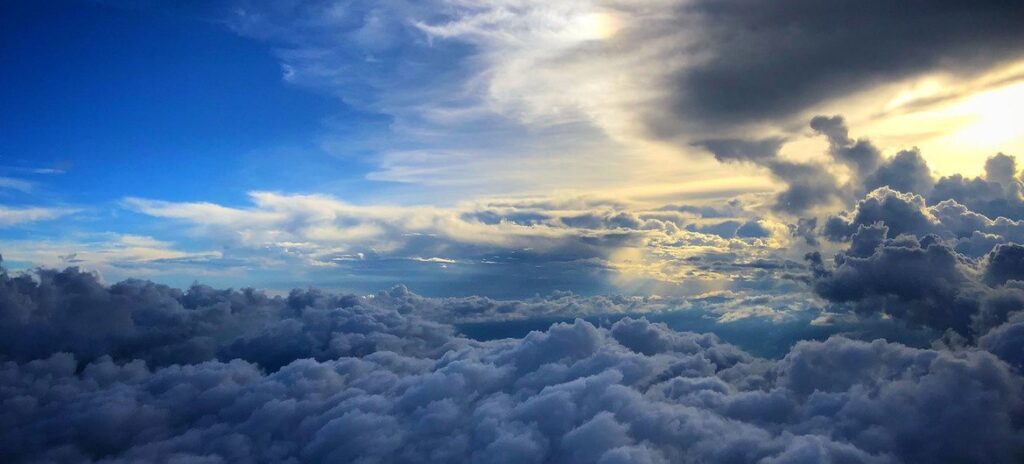The ozone layer is known for its importance in protecting life on Earth, but what is the truth about this layer? And what is its component ozone?
Facts about ozone
1. Ozone is a pale blue gas made up of triatomic molecules, which are oxygen (O3) atoms.
2. Ozone is present in its gaseous form in low concentrations throughout the Earth’s atmosphere, but it is present in high concentration in the upper layer of the atmosphere (the stratosphere).
3. Ozone is sometimes formed near the Earth’s surface as a result of interactions between some pollutants (such as nitrogen oxides and volatile organic compounds), strong sunlight and hot weather.
4. Ground-level ozone is one of the main components of chemical smog, a phenomenon that affects many urban areas around the world, especially during the summer months.
5. Ozone is a toxic gas to humans and can damage the lungs when inhaled, so it is harmful when it is found near the surface of the earth.
6. Ozone was discovered as a new substance in the air in 1840, and it was named (before its chemical nature was known), after the Greek word (Ozein) which means “to smell” because the gas has a distinctive, sharp, chlorine-like odor that can sometimes be noticed after storms. Thunderstorms in which lightning abounds. The composition of ozone was determined in 1865.
Information about the ozone layer
1. The ozone layer is a region of the Earth’s upper atmosphere, located within the stratosphere, at an altitude between 15 and 35 kilometers above the Earth’s surface.
The ozone layer contains relatively high concentrations of ozone molecules (O3), i.e. approximately 90% of the ozone in the Earth’s atmosphere is in the stratosphere. It is an area that extends from 10 or 18 km to approximately 50 km above the Earth’s surface.
The ozone layer is a fragile shield of gas that blocks almost all solar radiation of wavelengths less than 290 nanometers from reaching the Earth’s surface, including certain types of ultraviolet radiation and other forms of radiation that can harm or kill most organisms on Earth. Earth.
The ozone layer in the atmosphere was discovered by French physicist Charles Fabry in collaboration with physicist Henri Poisson in 1913, by exploring that the ozone compound has the ability to absorb ultraviolet radiation from the sun, by setting standards for spectral analysis, and using special devices to measure wavelengths of light.
Stratospheric ozone is primarily caused by the breaking of chemical bonds within oxygen (O2) molecules by high-energy solar photons (photodissociation) resulting in the release of single oxygen atoms, which subsequently join binary oxygen molecules to form ozone.
Rising concentrations of oxygen in the atmosphere about two billion years ago allowed ozone to accumulate in the Earth’s atmosphere, a process that gradually led to the formation of the ozone layer in the stratosphere, and the formation of the ozone layer played an important role in the evolution of life on Earth by blocking dangerous levels of ultraviolet radiation from the sun .
The ozone layer is of great importance in protecting human skin from harmful rays that cause cancer, and protecting eyes from health damage such as cataracts. The ozone layer also maintains plant life and its continuity, as the plant cannot live in the presence of ultraviolet radiation, and the ozone layer protects animals from ultraviolet radiation, which also destroys animal DNA, in addition to the role of the ozone layer in maintaining nutritional balance through Protecting plankton life which is a staple food for most marine organisms.
The amount of ozone in the stratosphere varies naturally throughout the year with the cycle of the sun and the succession of the seasons, as a result of the different chemical processes that create and destroy ozone particles, in addition to changing winds and other transport processes that move ozone particles around the planet.
Over the course of several decades, human activities have greatly altered the ozone layer and led to ozone depletion and lower ozone concentrations, especially over the polar regions.
Some man-made chemicals such as chlorofluorocarbons (CFCs) and other halocarbons (compounds of carbon and halogens), have destroyed ozone by stripping single oxygen atoms from ozone molecules.
Ozone depletion has led to the so-called ozone hole over Antarctica, an area in which the ozone layer is thinning, that is, in which the concentration of ozone particles decreases significantly, which appears annually between September and November.
As the amount of ozone decreases in the stratosphere, more ultraviolet radiation reaches the Earth’s surface, and this has significant impacts on ecosystems and human health. This was the main driver for the creation of international treaties such as the Montreal Protocol designed to protect the Earth’s ozone layer and deal with substances that deplete the ozone layer. .
The Montreal Protocol has achieved success in phasing out about 99% of ozone-depleting chemicals since the treaty’s adoption in 1987, which has improved stratospheric ozone levels, and continued reductions of these substances are expected to improve the ozone hole over Antarctica a year later 2040.












